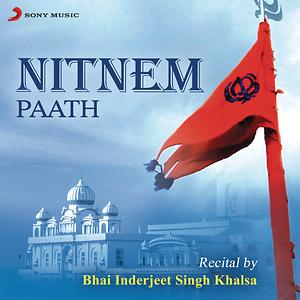

We do not upload any videos to YouTube or not showing any modified content.

The content provided in this app is hosted by YouTube and is available in public domain. Shabad Gurbani Singer Spl - Audio and Video in the voice of : 'Japji' is a universal song of God composed by Guru Nanak Dev Ji, the founder of the Sikh faith. A huge collection of Shabad, Gurbani, Kirtan, Path and Simran.This application the best listens "Shabad Gurbani Songs". God`s Word mediated through the Gurus or Word on which the Gurus had put their seal. Shabad Gurbani - is the term used by Sikhs to refer to any compositions of the Sikh Gurus.Gurbani is composed of two words: 'Gur' meaning 'the Guru's' and 'bani' meaning 'word'. Go to to purchase a beautiful and inspiring translation of Japji.Shabad Gurbani Songs, Kirtan, Path & Nitnem 2018 - app includes Shabad, Gurbani, Kirtan, Path, Nitnem and Simran. In this way, reading the entire Japji Sahib completely adjusts “all the elements in all of the chakras and completely adjusts your subtle and physical bodies”. As you continue to recite, you work progressively through the chakras and the tattvas until you end at the 40 th step with the First Chakra at the frequency of Earth. When you take the first ‘step’ of reciting the Mool Mantra, this is associated with the Eight Chakra at the frequency of ether. Mathematically, five times eight equals forty-the number of paurees in Japji. Additionally, there are eight chakras, including the aura. There are five elements or ‘tattvas’ of which all matter is composed-earth, air, fire, water and ether. It is taught that Japji starts from God and comes to earth. The word ‘pauri’ means ‘step’, as on a staircase. There are 40 verses in Japji – the Mool Mantra at the beginning, 38 pauris, and the slok at the end. The structure of Japji is beautifully technical and precise. The Japji appears at the very beginning of the Guru Granth Sahib, the Holy Book of. Japji Sahib consists of the Mool Mantra as the beginning followed by 38 hymns and a final Salok at the end of this composition. With the complete recitation of Japji Sahib, it is said that every problem can be solved and dissolved. Japji SahIb (in Gurumukhi with meaning) Japji is a universal song of God composed by Guru Nanak Dev, the founder of the Sikh faith. Meditation on each of the remaining 38 verses offers equally unique, rich and powerful pathways of healing, self-discovery and revelation. Recitation of this pauri eleven times a day will lift you from the deepest depression, insecurity, nightmares and loss. Similarly, it is said that the total knowledge of God and ecstasy is contained in the first pauri. Reciting the Mool Mantra, for example, gives an experience of the depth and consciousness of your soul and can change your destiny to complete prosperity.

Yogi Bhajan has taught that by reciting different stanzas-or pauris-of Japji eleven times a day, one can access very specific effects. Sounds have profound effects on the psyche, and when they are arranged in the science of naad, they have very specific transformative power. The power of Japji comes from the combination of its sounds, or naad. Step by step, Japji gives you the comprehensive power to know yourself as you are and be with God’s Creation in a spirit of joyful surrender.” The Sound Current of Japji and the meaning of its words, when meditated upon with openness and love, awakens a soul to its destiny. Japji is a teacher for anyone seeking Truth. Stated very clearly, “Guru Nanak spoke Japji as a way to guide and enlighten other human beings about the reality of the Divine within the Creation. It was written by Guru Nanak, the first Sikh Guru who, with his companion, Mardana, traveled on foot over thousands of miles teaching people through song and simple inspiration to live exalted and simple lives. Japji is one of the five daily prayers of the Sikhs. The repetition of Japji gives you a consistent projection and allows you to access your own infinite source of inspiration and depth. (Originally published in Aquarian Times, Spring 2004 and Sikh Review, Fall 2004)


 0 kommentar(er)
0 kommentar(er)
